Introduction
All full frame E-mount cameras (except for the A7r) feature an electronic shutter in addition to the mechanical shutter. While most of them only offer an “electronic first curtain shutter” the A7s(II) and and A7rII even offer a completely silent, purely electronic shutter. But there are unfortunately some limitations you should be aware of.
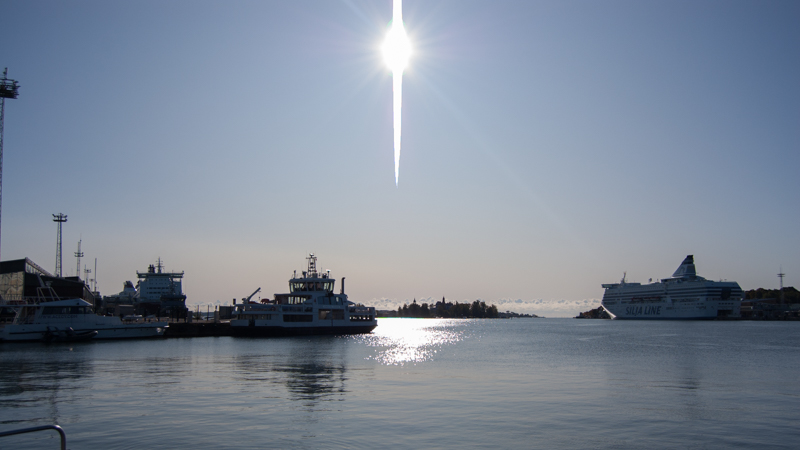
Technical background
There are different kinds of shutters and I don’t want to go too much into detail here, you can read a bit more about them here. What I will focus on is the difference between mechanical and electronic shutters and what it means for us.
DSLRs had problems with camera shake (especially when mounted on a tripod) due to two reasons: the mirror and the shutter. Both cause vibrations and may lead to degraded image quality and blur. With mirrorless cameras the mirror has been taken out of the equasion but the shutter remains and has caused some trouble on the A7r.
Already the first A7 had the option to use an electronic first (or front) curtain shutter (short: EFCS or EFC). So instead of the mechanical shutter taking any action at the beginning of an exposure by pressing the shutter button you just tell the sensor “start exposure now”. At the end of the exposure the mechanical shutter is used but it can cause no harm as you are already done with “light gathering”.
The A7s(II) and A7rII even offer “silent shooting”, so not only the first curtain is electronic but also the second (rear) curtain, meaning the camera makes no noise whatsoever when taking a picture. Just like your smartphone – in case you disabled that annoying and ridiculous fake shutter sound.
Electronic shutters are not entirely new, my first serious camera (Nikon D40) already offered one and therefore sometimes gave me results like this:
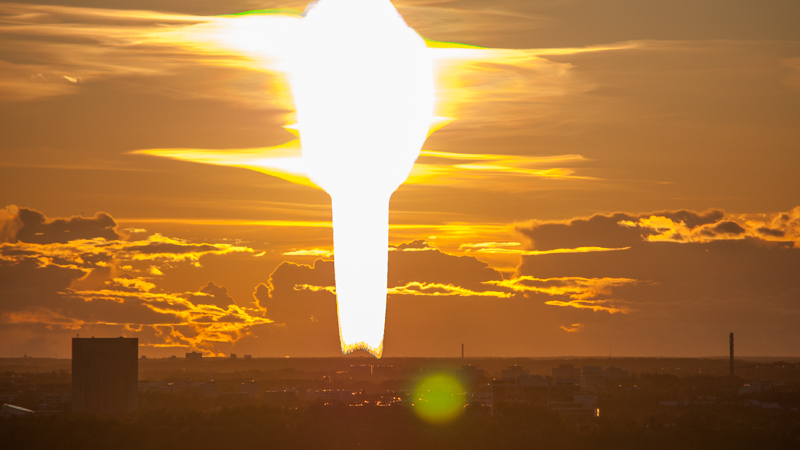
But this was almost 10 years ago, so we don’t encounter any issues like these anymore today. Or do we?
The silent shutter (A7s(II) and A7rII only)
The silent shutter is one of these things that just sound like a great idea at first sight: taking shots without the camera making any noise? That’s nice.
As I have recently shot a few events I thought I give it a try but pretty soon I ran into problems:
A7s with silent shutter
Do you notice that strange yellow/orange lines that run across the picture? In case you don’t at first sight I modified saturation a bit so you can see what we are looking for. Luckily I was checking the LCD a few times and after 3 shots I decided to stick to the mechanical shutter instead.
But I was still asking myself “What happened here?”
I came across this post by Jim Kasson who does all kinds of interesting measurements on his blog.
I was astounded it takes 1/12s to read out the whole A7rII sensor when silent shutter is activated (1/30s for A7s), this sounded pretty long to me and it is, and a long read out time may lead to several problems.
Update: the Sony A9 has a very fast sensor read out and should barely have any issues with the silent shutter.
Things are not always as the human eye sees them. The old conventional light bulbs are constantly emitting light, but this is not true for all LED and fluorescent lamps. Dimming LEDs is not an easy task, but as we really want to be able to dim our lights, we came up with “pulse width modulation”, you can read more about it here.
I will try to cut the long story short: some artifical light sources are not constantly emitting light and the electronic shutter in the A7s(II)/A7rII is not something that just works instantaneous, combined this may lead to severe banding as can be seen in the shot above.
So during day hours you street photographers can still happily shoot away silent, but one has to be very careful under artifical light. Also keep in mind: activating silent shutter will reduce the bit depth of your raw files from 14 to 12 bit resulting in lower dynamic range.
The electronic first curtain shutter
I am a big fan of the electronic first curtain shutter (EFCS/EFC). It allows me to use lighter tripods and resolves the problem of shutter shock altogether.
But someday I came across the claim that using the EFC can have bad influence on the bokeh at certain combinations of shutter speed (faster than 1/1000s) and lens (fast aperture). And tested this for myself:
Sony A7s | ZhongYi 50mm 0.95 | f/0.95 | 1/8000s | Before: mechanical shutter / After: EFCS activated
Sony A7s | ZhongYi 50mm 0.95 | f/0.95 | 1/500s | Before: mechanical shutter / After: EFCS activated
To be honest with you here: I was (and I still am) totally baffled by these results. The camera was set on a series 4 Gitzo tripod with Arca Swiss P1 head. This is pretty much as stable as it gets and I was also using a remote control. I ran the test with the A7s (a few times actually) and as I still had a hard time believing the results I reran it on the A7rII with the exact same outcome.
At 1/8000s there is not only a huge influence on bokeh but it even looks as if the image plane is being considerably tilted. I failed to find any explanation for the tilt, I can only tell you 1/500s is the fastest shutter speed where I think the differences are negligible.
I also did some digging then and once more ended up on Jim Kasson’s blog (comparison at 1/1000s with Otus 85mm 1.4 and hardly any difference in bokeh rendering) but also found myself in a very interesting discussion on the dpreview forum. In this post you clearly see inferior bokeh when EFCS is activated, but on closer examination you also notice different shutter speeds and this is a very bad basis for a comparison where shutter speed is an important factor.
As my time spent in internet discussions went by I finally came across this post. As you can see the EFCS can have a very negative influence on the evenness of the exposure at higher shutter speeds.
I still found no explanation for the tilted image plane though. So, in the end I can only tell you: above 1/500s stick to the all mechanical shutter to avoid any issues, below that EFCS just works fine.
Sony engineers: please add the option “auto” to the EFCS (hint: If t <= 1/500s use MFCS, else use EFCS, can’t be so hard to program, can it…?).
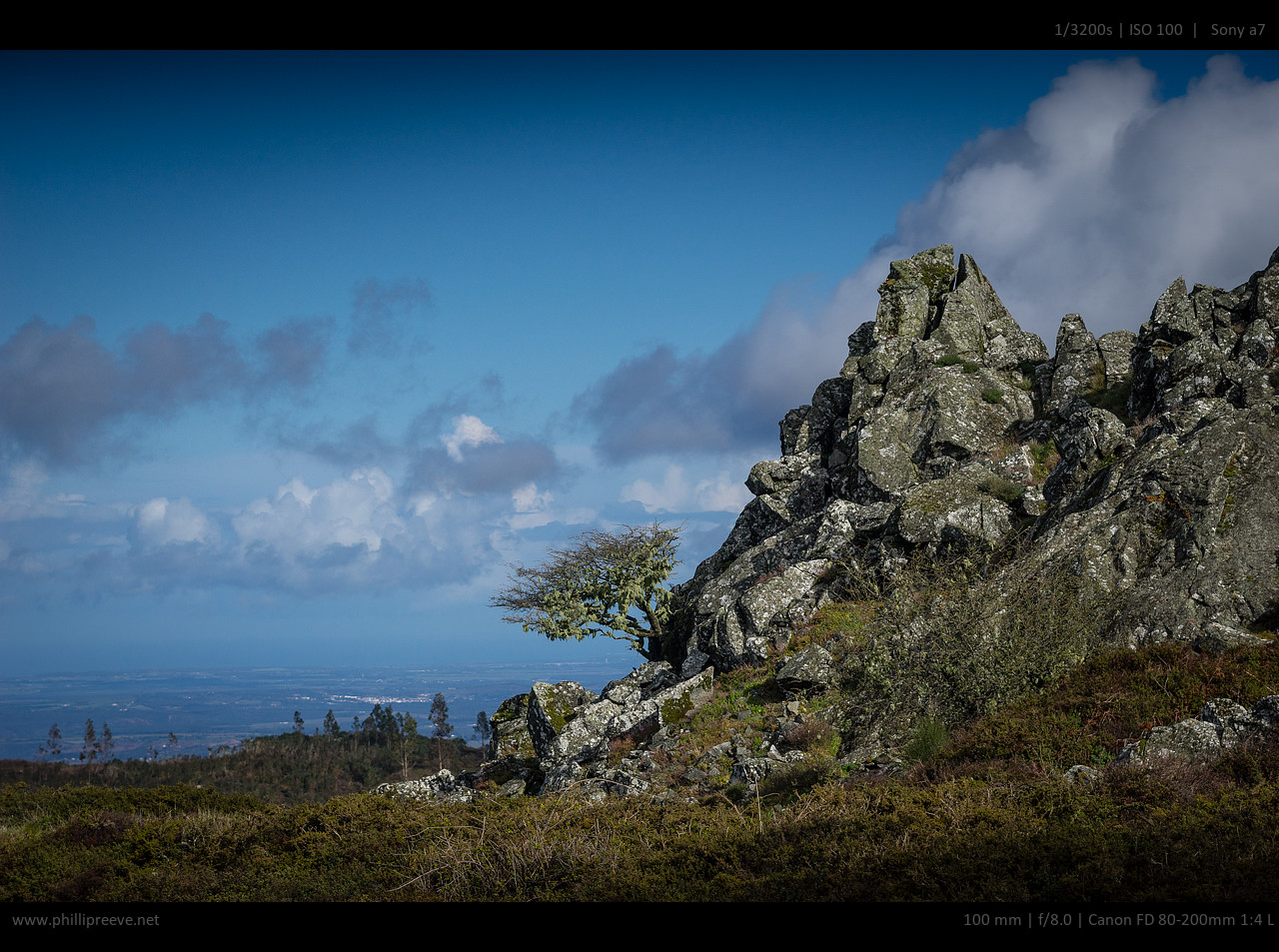
Final words
As you can see the electronic shutter has some caveats you should be aware of, but if you follow these two rules you should not run into any problems:
- Do not use EFCS or silent shutter with shutter speeds faster than 1/500s
- Be careful when using the silent shutter under artifical light, take a few test shots first and check for banding
I hope this article was helpful to you and might even improve the technical side of your photography a bit. In case you share a different point of view on some of the topics I mentioned above I am happy to discuss this with you in the comment section!
Other Articles
- Review: Mitakon 50mm 0.95
- Affordable manual lenses for the Sony Alpha 7,7r,7ii,7rii and 7s
- User-Guide to ultra-wide-angle lenses for Sony a7 a7II a7rII
Support Us
Did you find this article useful or just liked reading it? Treat us to a coffee!
![]()
![]()
![]() via Paypal
via Paypal
Latest posts by BastianK (see all)
- Full Resolution Pictures getting fixed - July 4, 2025
- Analogue Adventures Part 42: A wedding with Eastman Double-X 200 - July 2, 2025
- Vivo X200 Ultra – The Death of the compact Camera - June 29, 2025
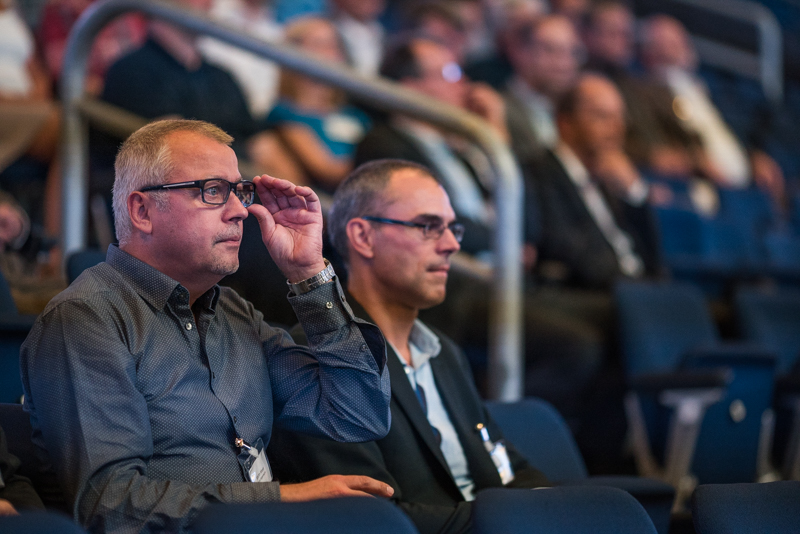

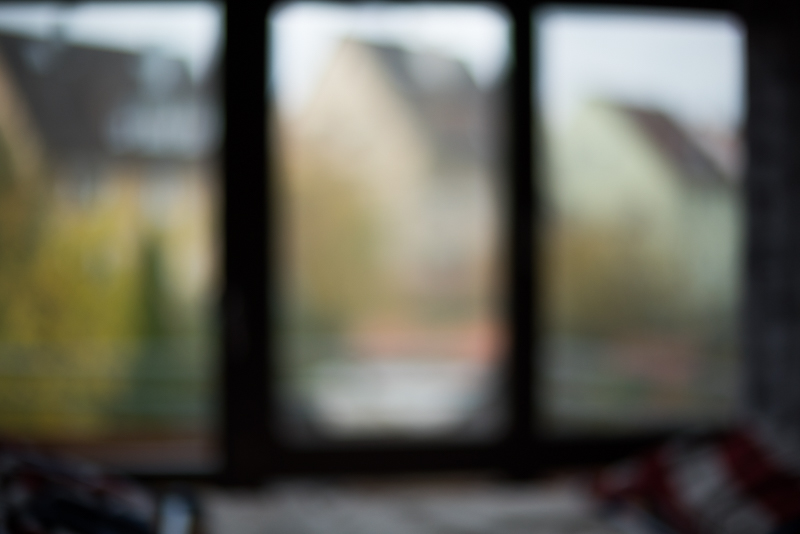

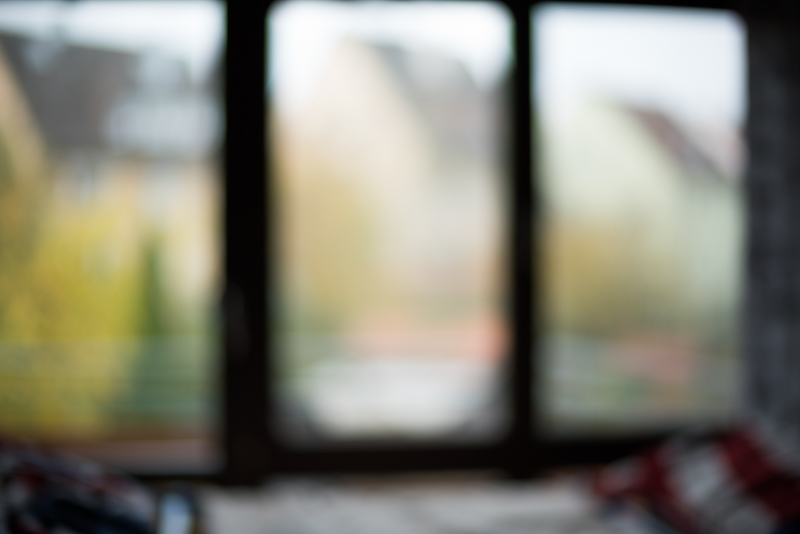
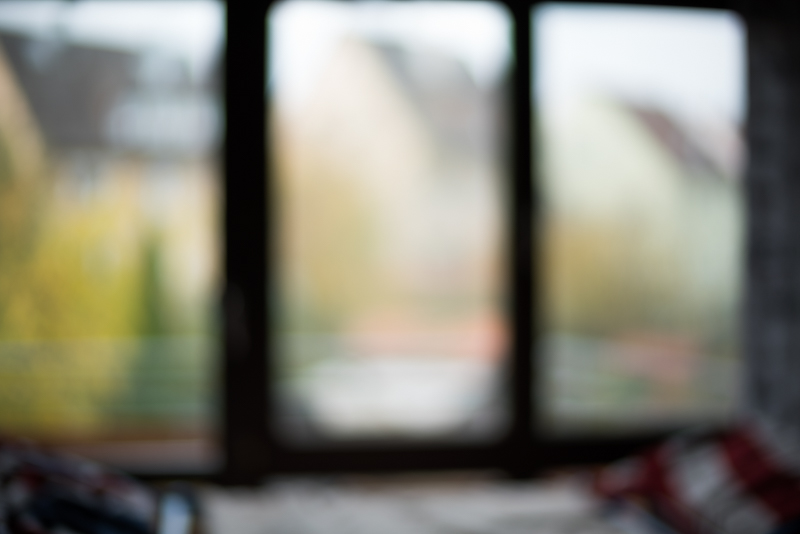
There was a note from Sony when the original a7 was released noting that electronic shutter (efcs) could cause issues with 3rd party/adapted lenses at high shutter speeds. I think that was primarily about the darkening of the top of the image. It was noted that with native lenses this was not an issue. So it’s possible Sony can compensate when it knows the details of the lens. The bokeh issue is probably separate from that.
Hallo Phillip, deine Formel für Sony müsste, glaube ich, gerade anders ´rum formuliert werden. Grüsse, Michael
Nein, stimmt so. Viele Leute übersehen, dass 1/8000s < (kleiner) 1/500s ist, weil die Zahl im Nenner größer wird.
The banding issue with artifial lights can be solved most of the times by setting the shutter speed to a multiple of 1/50, e.g. indoors I always set the shutter speed to 1/100 and there’s no banding most of the times. This is related to the frequency of AC, so if you travel to the US, set a multiple of 1/60, I always set 1/125 and that did the trick for me. Easy solution. You just have to get used to it and remember to set it that way.
And what about the 12-bit files? Well, no problem at all, because modern cameras are plenty good at “only 12 bit”.
Sometimes there is a real problem when you have fast moving things or people in the picture, because the longer read-out time can result in them being distorted, if they move too fast.
Conclusion: I love silent shutter and have used it happily for years on my cameras that offer it.
P.S.: For me it will be interesting to see where you move with this blog in the future. Now that you’ve reviewed so many of the interesting vintage lenses (and you did a great job!), what is next to keep this blog alive? Reviews of tripods, leather cases or other accessories won’t be enough, me thinks… Also this article about the shutter doesn’t convince me. But ok, that’s just me 😉 Good luck!
The shot with the banding I took was at 1/160s (~3x 50) in germany, didn’t help.
I also don’t think constantly adjusting the shutter speed during shooting events is even possible.
Bastian,
1/160 is not close enough to 1/150 obviously. Try again with 1/100. Just do some tests and see for yourself.
“Constantly adjusting the shutter speed”??? For what I do (I’m no sports or action shooter), 1/100 is perfect most of the times for indoor shooting – why should I change the shutter speed all the time?
Just to repeat it: I have used electronic shutter in several cameras for years and I have almost forgotten about the “problems”. And I’m usually very picky with those kinds of things.
You say 1/160s is not close enough for 50 hz but 1/125 is close enough for 60 hz?
I mostly shoot events in A mode, meaning the camera may change time and/or ISO, but if shooting events works for you in S mode set to 1/100s I am perfectly fine with that 🙂
Mark is partly right in what he says, there is just a small misconception: In order to avoid banding, you should be using multiples of half a mains period. For example: 1/100 s, 1/50 s, 1/33 s, 1/25 s… (=n/(2*50Hz)) should be fine.
Most lights will emit light at twice the mains frequency, and this is why you can choose 1/100s, but can’t use even shorter times (=bigger numbers).
In 50 Hz regions and with no fluorescent lights involved, I got banding with 1/60, 1/80, 1/125 and 1/160. Perfectly no banding at 1/25, 1/50, 1/100 and (to my surprise) also 1/200. That was with D850 and electronic shutter (problems are the same as with Sony cameras, I believe).
If you shoot on events, things will be different as LEDs not necessarily pulse with 50 Hz – and most lights these days are LEDs. Mixed light sources might be difficult, but I do rely a lot on Auto ISO. Better a bit of noise than banding which ruins every shot. I think, the stadium shot also suffered of artificial light?
The “flicker reduction” to me is kind of “last stand” because it’s only reducing banding, it doesn’t disappear fully.
In the US and Brazil the grid runs at 60Hz, if that’s what you’re aiming for. Just a note. 🙂
“You say 1/160s is not close enough for 50 hz but 1/125 is close enough for 60 hz?”
Yes, that’s my experience! I found from my experiments that 1/50 and 1/100 work best (1/60 and 1/125 in the US). The AC frequency is not perfectly constant and I cannot guarantee that this works for each and every artificial light source, but I just can’t remember having a picture with banding in the last years. I don’t say there is no problem at all, I just say that within these parameters you can take pictures and be happy, because the silent shutter is so great to have – especially with people and indoors, not disturbing everybody with the “klack-klack” shutter all the time!
Talking about A or S mode: Remember that with Sony you can also use M mode and let the camera pick ISO automatically!
Thanks for the test. I also noticed that even without the 14/12-bit fluff, using electronic shutter still has a negative influence on dynamic range. I used a Sony a7s and shot some dark field. At base ISO the difference is very obvious with a maximum push of low-light. High-ISO appears to be intact though.
Very interesting note, thanks for sharing!
I will check that myself next time I am out shooting night skies with my A7s.
Hey,
This is obvious since high ISO is affacted by such a high noise that there is no useful information in those low bits. So there is almost no difference between 12 vs 14 bit. It’s same on m43 system. Panasonic useses only 10 bits for example and for high ISO it’s still enough.
Thanks a lot! This explained the issue i had with the Voigtländer Ultron 35mm and my A7II. I just checked the files where the problems occured and all were at shutter speeds faster than 1/3200
One example with 1/8000s: https://i.imgsafe.org/9f73277664.jpg
Thanks for sharing!
Thank you very much for this very informative note. I ran into the dark banding issue that you showed in the last picture. I “solved” the problem by going back to the mechanical shutter, unfortunately I didn’t engage in trying to find out the cause. I mostly experienced it using my Nikkor 135/3,5 Ai.
Best regards
Carlos
Great advices, really appreciate them!
Thanks a lot for this informative article – I just reproduced the electronic first curtain issue on my A7 and the a6000 – both show the same phenomena which I probably would´t have noticed otherwise. But it actually is a pretty obvious difference comparing side by side.
I have at home Philips Hue led lights. It’s impossible to use silent shutter with my A7S. I have tried different shutter speeds, but there is no remedy from banding. Because they are multicolor led lamps, they probaply use different PWM frequences for different colored leds inside the bulb.
I have to say that I have no idea what is supposed to be seen here with BEFORE and AFTER. If I hover over the picture it dims, but that is about all. When I move the mouse from left to right there is a brief flicker but the picture looks again exactly the same – dimmed. ??
Is that true for all the before/after comparisons in this article?
What browser are you using?
Yes, -the same here…. and it doesnt matter what web browser I am using in Windows 10.
Could it be, that the aperture effect or diffraction on the edges of the shutter leads to different results? Especially in case of very short times the shutter is only a very small slit between both courtains – did this not results more bokeh like an additional aperture (which was in some older lenses also build as a slit not round). It´s my idea, sorry if i´m wrong.
I lack the technical insight of what exactly is going on when using the electronic shutter to properly answer your question.
That’s an interesting explanation, I could see that happening. But I’m wondering, wouldn’t it make more sense for the bokeh to be worse with the fully mechanical shutter than the EFCS then?
In any case, this is very strange and I hadn’t noticed. But I rarely use high shutter speeds anyway.
The effect seen in your first two photos is caused by massive overexposure overloading the pixel array with energy flooding down the pixel columns, not by the electronic shutter.
Your post about Bokeh differences between mechanical and EFCS really blew my mind. I thought about it for a while and I think I know what’s happening.
With a regular mechanical shutter doing a fast exposure, the first and second curtains move together, making a ‘slit’ that slides across the sensor to expose it.
With EFCS, the sensor starts out fully-uncovered, and the second curtain quickly covers it from one side to the other. Since the shutter isn’t in the focal plane, it’s going to show up in the bokeh. In this case, the bokeh is being exposed longer on the bottom than the top, because the whole sensor is still exposing while being covered from only one side. This makes the bokeh look ‘biased’ upwards in your photos.
The camera can correct uneven exposure across the entire image, but the bokeh reveals the truth.
If you pay close attention to the shots I show here you will notice there are elements in one frame (with EFCS) and not in the other one (without EFCS) and also vice versa.
This is not just a mere difference in bokeh, this only happens through tilt and/or shift.
It definitely does look shifted.
Changing the shape of the aperture (by cutting across it with the 2nd shutter) will cause a shifting effect on the final image, though. I still think it’s all due to that.
Would be cool to test by taking a picture of a single bright un-focused point. In EFCS mode, it should look more like a sunset than a circle.
Was steady shot “on”? Perhaps its an interaction of steady shot + silent shooting mode or EFCS?
A7s does not even have steady shot.
Thanks for your test! I have made my test with Sony a7 (first generation, ILCE-7) and Zeiss Sonnar T* 55mm F/1.8. The test showed that EFCS negatively affects the image even at low shatter speed. Maybe it works “that” only on ILCE-7, I don’t know, but I turned off EFCS. Below links to image, where numeral 1 = EFCS is ON, where numeral 0 = EFCS is OFF.
https://yadi.sk/d/WuRaanxS3LXC2W
I can confirm the EFCS issue at high shutter speeds and wide open f-stops for the ILCE-7RM2.
Recently acquired a Leica Summilux-R 80mm lens. Did some test shots in the sun wide open (f1.4 and 1/8000) – the images were all wildly under-exposed. Same thing at f2.
Was just about to assume the 80-lux was a dog but… switched to EFCS “OFF” and… proper exposures and beautiful images wide open.
Actually regular tungsten bulbs also flicker, at 60 hz here in the US, but the glowing filament has enough heat latency that there is typically no problem. But, when filming at high speed one can see this flicker. The thinner the filament the more chance of recording this. Typically using our professional, large “caliber” tungsten lamps we also don’t see a problem. But smaller household bulbs can give us a pulsation.
Hi! I got most of my pics ruined yesterday because of some strange shutter (I believe) behavior. Have You seen something like this, and could You maybe give me an hint what it could be.. I have put one of the pics (see link below) thats clearly shows that one part of the image is darker then the other half. Camera Sony A7 mk, lens Canon 16-35 f4 with Metabones mk 4, temp -8 c. Today I can’t “create” the issue again though I have tried?? Asking You since I know Your proffessional approach regarding camera/lens issues.
https://www.dropbox.com/s/00pblt6m50lux8r/Error_LA10620.jpg?dl=0
hmm, to me it seems that you marked where the horizon meets the sky and I don’t really see an issue.
Thanks for quick reply… You will see it better maybe on the attached pic if You compare it with the first pic . I took several pics that day, even “normal” motifs and the same “error” occured. See link below! -Strange if You ask me and almost impossible to fix…. Took at the same time some pics with my other Sony a7 mk 2 (have two, with different lenses on) and a Canon 100-400 mk2 but no problem there…? By the way… thanks for the best info regarding lenses and other Sony A7 xx stuff… You guys make me still “hungry” though 30 years as a professional photographer. I salute Your work!
https://www.dropbox.com/s/94rhwctj07ycsa4/Error2_LA10623.jpg?dl=0
The pics taken with the tele zoom is of course different in angel but photographed under the same conditions… -8C and at the same time, but with a other camera house…
https://www.dropbox.com/s/mxf0oattcgydfgf/J1_LA20489.jpg?dl=0
The strange thing is that all pics that day has this darker part photographed with that camera house… but not today. have been using this camera for more then one year now and have never seen anything like it?
Just got my a7 and I am wondering, does using EFCS also mean 12bit raw files with a7 or is this only with a7s and silent shutter?
Cheers, A.
Hi Bastian
Does silent shutter also cause bokeh/tilt issue or only EFCS causes it?
You recommend 1/500 ss for both modes or only EFCS, if i am shooting in daylight?
Thanks for documenting this,
Nde
True for both on A7s and A7rII.
A9 should not have these issues with either as it has a much faster read out time.
A7rIII I am not sure, might be slightly better than A7s and A7rII but I haven’t tested myself,
so take that info with a grain of salt.
Thanks
Test with leica 135mm 2.8 electronic and mechanical shutter all conditions the same, on tripod
There are many changes in the histogram.
Hard to say which is better.
Nice article! Very good to know this. Thanks a lot.
I like the two lines of code. Must have been hard work for you to develop. ? Sony engineers could as well add two more lines for limiting maximum shutter speed. They already managed to do so for iso.
There’s some strange discussion going on in the comments of how to easily avoid banding by using multiples of regional frquency. I don’t think this is a very smart solution.
First, I would not want to always calculate, as photography is supposed to be art instead of maths. It wouldn’t also work for me. I use all thinkable shutter speeds, mostly between 1/2000 up to 1/60s, depending of what I shoot. With ISOs up to 1600 working very well for me, I wouldn’t bother with sony’s stupid Auto shutter speed algorithm.
Also, I’m not sure if any puls width modulation neccessarily has to be a multiple of local ac frequency. I believe not…
Well it helps as you can easily test for yourself.
Hello Bastian and team,
Is the no EFCS at 1/1000 or faster still relevant on the 3rd series of a7 cameras?
Thanks,
Daniel
I don’t have a gen 3 camera but afaik problem is still there and will always be.
please correct me if i’m wrong. If i shoot landscape and want maximum sharpness (e.g. from a tele lens at f8) i use the following settings (on tripod):
– ibis and OSS off
– EFCS on >1/500s
– EFCS off <1/500s
That is pretty much how I am running my sharpness tests for the reviews these days, yes.
I found this article very helpful after realizing that my new camera (Fuji X-T3) has an EFCS. Frankly, I fail to understand what the point of an EFCS is. It’s not faster (shorter shutter lag) or more quiet than the regular mechanical shutter.
If you are shooting tripod based it will avoid shutter shock.
Ah, that makes sense. While I’m here, thanks also for the many well-written lens reviews! I have enjoyed them for a long time.
I noticed that the new Panasonic S5 has an automatic function to switch from EFCS to mechanical shutter above a shutter-speed threshold. So Panasonic at least was able to accomplish this. It would be great to see Sony follow suit!
Hi Bastian,
Many thanks for the very informative article. Excellent information, as usual. I have a follow-up question on adapted lenses: In the manual to the a6500 and the a7RII, Sony advises to switch off EFCS not only with fast shutter speeds and large-aperture lenses, but also in general when using adapted lenses (incl. Minolta A-mount lenses), regardless of the shutter speed.
https://helpguide.sony.net/ilc/1640/v1/en/contents/TP0001273834.html
https://helpguide.sony.net/ilc/1520/v1/en/contents/TP0001077175.html
I was testing if I could see a negative effect from EFCS with a Minolta 200/2.8 HS APO G on an a7RII, and I could see banding with shutter speeds faster than 1/1000, becoming clearly visible at 1/8000. But I did not see any banding at slower shutter speeds.
Hence my question: Do you have an explanation why Sony recommends not using EFCS with adapted lenses?
It seems that this passage in the manual was taken over from the SLT series cameras. Based on my testing, I would apply your rule (EFCS off for shutter speeds faster than 1/500) also for adapted lenses (incl. Minolta A-mount lenses) and use EFCS if the shutter speed allows. Maybe native lenses communicate information to the camera which allows compensating for the effect of EFCS, at least partially.
PS: Michael Hohner offers some explanations, which revolve around lens design:
https://www.mhohner.de/newsitem2/efcs
https://www.mhohner.de/newsitem2/efcs-update
Thanks and kind regards
Christian
Wow! That is so helpful. I ruffed up my camera (a7ii) when I was mountain biking and I had to replace the screen and some plastic parts so I though that I might have screwed up my shutter when I noticed that higher SS shots had an awful underexposed band on the top. Until I read this I was starting to think about investing in a newer camera like the a7iii but that problem might not be resolved apparently! I wonder if the a7c has this same problem 🤔. I guess I might be holding onto my a7ii for another couple years until an a7 variant comes out with this issue solved. Do you know about any more models that might not have this problem besides the a9?
I noticed that with EFCS off on the A7iii, I am getting some strange round bands happening across a variety of shutter speeds, apertures and lenses (so far have tried the FE 35 1.8, FE 50 1.8, FE 85 1.8 and FE 200-600) in daylight. When I turn EFCS off, this goes away. This is shooting during daylight either into the sun or away from it. So for now, unless I am shooting indoors, I am going to turn on EFCS. Has anyone else experienced this issue? It definitely ruined a lot of my photos today and a few from earlier this year. I have had my camera since the A7iii was announced, but didn’t turn OFF the EFCS function until the Internet started to talk about bokeh issues. 🤦🏻♂️ So for the first few years ownership, I never had a problem.
Those are asymmetrical sensor reflections. The sensor is exposed ahead of the recording slit in EFCS, whereas it is covered both ahead and behind the recording slit in mechanical shutter.